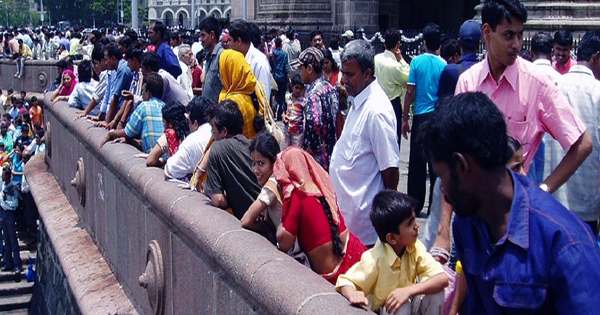India’s Total Fertility Rate (TFR) has gone below replacement level for the first time in recorded history, indicating that the country’s inhabitants are no longer producing enough children to replace the previous generation and that net population growth would be negative.
The discovery, which was part of the National Family Health Survey released this week, represents a watershed moment in India’s continuous battle against its fast-rising population, which is on track to overtake China as the world’s most populated country within a decade.
The National Family Health Survey (NFHS-5) for 2019-20, the fifth in the series, collects data on India’s population, health, and nutrition for each state and union territory. NFHS-5, like NFHS-4, gives district-level estimates for a variety of key variables. The Ministry of Health and Family Welfare (MoHFW), Government of India, oversaw the execution of all five NFHS surveys.
The Ministry of Health and Family Welfare has selected the International Institute for Population Sciences (IIPS) in Mumbai as the survey’s nodal agency. The Government of India contributed funding for NFHS-5. The USAID-funded Demographic and Health Surveys Program, ICF, USA, provided technical help and supplementary financing for NFHS-5. The ICMR and the National AIDS Research Institute (NARI), Pune, assisted with several of the Clinical, Anthropometric, and Biochemical (CAB) testing.
Using Computer Assisted Personal Interviewing, data was collected in 19 languages using four survey questionnaires: household, women, men, and biomarker (CAPI). In the selected sample families, all women aged 15-49 and males aged 15-54 were eligible for an interview. Basic information on all regular members of the household and visitors who stayed the previous night was collected in the household questionnaire, as well as socioeconomic characteristics of the household, water and sanitation, health insurance, and the number of deaths in the household in the three years prior to the survey. In NFHS-5, two versions of the woman’s questionnaire were utilized.
The initial edition (district module) was sent to the whole sample of NFHS-5 homes and collected data on women’s characteristics, marriage, fertility, contraception, reproductive health, children’s vaccinations, treatment of childhood diseases, and nutrition. At the district, state, and national levels, information on these issues is available.
Four more items, namely sexual behavior, HIV/AIDS, husband’s background and women’s job, and domestic abuse, were introduced in the second edition of the questionnaire (state module). This version was distributed to a subset of NFHS-5 households and aimed to offer just state and national information. The man’s questionnaire included questions on his personality, marriage, number of children, contraception, fertility preferences, diet, sexual behavior, gender roles, HIV/AIDS, and lifestyle.
For children, the biomarker questionnaire included measurements of height, weight, waist, and hip circumference, haemoglobin levels, and finger-stick blood for additional CAB testing in a laboratory for women 15-49 and men 15-54. The biomarker questionnaire included measurements of blood pressure and random blood glucose and for women and men 15 years and older, the biomarker questionnaire included measurements of blood pressure and random blood glucose. Only with the respondents’, informed consent were questionnaire data biomarkers obtained.
The NFHS-5 sample was created to give estimates for all national and state-level key indicators, as well as most district-level important indicators (for all 707 districts in India, as of 31 March 2017). The overall sample size for India was based on the number required to obtain valid indicator estimates for each district, which was roughly 610,000 homes.
The rural sample was chosen using a two-stage sampling strategy, with villages serving as Primary Sampling Units (PSUs) in the first stage (picked with probability proportionate to size), and 22 families in each PSU being randomly selected in the second stage. In metropolitan areas, a two-stage sample design was used, with Census Enumeration Blocks (CEB) chosen first and a random selection of 22 homes in each CEB chosen second. After executing a full mapping and household listing operation in the designated first-stage units, households were selected for the second stage in both urban and rural regions.
The TFR measures the average number of births per woman, and the UK has a TFR of 1.65, whereas the United States has a TFR of 1.70. India’s TFR has already fallen below 2.0, well below the replacement rate threshold of 2.1, with some regions reporting TFRs as low as 1.6. While the effect would not result in an immediate decrease in population, it will greatly impede population growth.
For decades, India has struggled with population growth, and public health authorities have employed sexual health campaigns to educate the public and boost contraceptive usage. Such ads have had a significant impact, with the same poll indicating that condom usage in India has increased by 3.9 percent since the last survey in 2015.
Although there is still work to do, with five states in India having a TFR of more than 2.1, the newest data shows that the efforts are working and that India’s population growth may be slowing.















